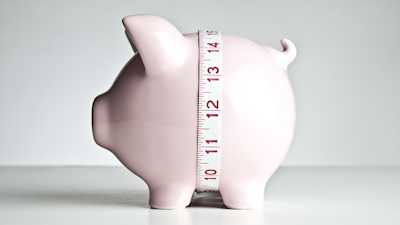Understanding debt

Business Essentials was created to build your knowledge of core Money & Finance topics. Check out the entire series!
You seldom hear the question, “Do you have enough debt?” The usual caution is having too much and being unable to make the payments. However, if your farm business is expanding, diversifying or transitioning to the next generation, debt is a tool to help you achieve your objectives. Attitudes about debt differ, but understanding it is key to using it properly.
Good debt or bad debt
There are countless stories about people maxing out their credit cards on consumer spending. If you’re using debt to buy fancy cars, a big boat or lavish holidays that you can’t afford, it’s a bad idea.
If interest payments on a loan are not tax-deductible, it’s a personal loan, not a business loan.
Not all personal loans are bad. Most people take out a mortgage to buy their home, but debt for a well-planned business purpose is different. If a loan makes your farm more profitable and sustainable in the long run, and if you have a solid repayment plan, it can be an essential business instrument. But, it’s ill-advised to pay for something beyond its useful life, like breeding stock and equipment. Like any tool, debt needs to be understood and respected.
Credit scores
As people have more and more access to credit, the need has grown for a comprehensive credit rating system to track individual performance. You’ve probably heard that everyone has a credit score based on their borrowing history, but you may only have a vague idea of how this works.
When you sit down with a lender and apply for a loan, you’ll grant permission for the lender to access your credit score. This rating reflects the relationship with your current creditors, including how diligent you’ve been in repaying as agreed.
Most people don’t realize that paying your cell phone bill late can reduce your credit score. In the same way, always making the minimum payment on your credit cards rather than paying off the entire amount owing can erode your credit rating. Credit scores improve if you maintain a record of paying on time and don’t appear to be over-utilizing credit. On the other hand, shopping around for credit at many places over a short time will hurt your score.
A lender is not supposed to share your actual credit score number but may ask about specific incidents. Be prepared to explain any negatives. There are often two sides to the story.
Late payments or collections can damage your rating for years. And credit rating history typically goes back at least six years. However, with diligent effort, you can improve your score.
The two national credit bureaus in Canada are TransUnion Canada and Equifax Canada. You can obtain a free copy of your credit report from each bureau. The credit report will not include your credit score but can be available for a small fee. The scoring system runs from 300 to 900. The higher the score, the better your rating.
Mistakes in credit reports and scores can and do occur, so it can be valuable to check this information at regular intervals.
Learn more about credit reports and score basics from the Government of Canada.
Working capital
For most farm loans, credit score is never discussed, which typically means the lender is comfortable with your repayment history. A credit score is about history, but taking out a new loan is about your future ability to pay. And one way to asses this is to calculate your working capital.
Working Capital = Current Assets - Current Liabilities
It can also be expressed as a Current Ratio.
Current Ratio = Current Assets / Current Liabilities
Current assets include short-term liquid assets than can reasonably be converted to cash in a year (either sold directly or consumed in the current year production cycle). Examples include money, inputs such as fertilizer, feed, seed and chemical, crops in storage, livestock that will be sold and accounts receivable.
Current liabilities are expenses and payments due in a year. Examples include unpaid invoices for farm inputs, cash advances, payments due for longer-term debt and your line of credit.
A current ratio of less than 1.0 means you won’t have enough cash to pay your obligations and could be a problem depending on your enterprise. You’ve heard the statement cash is king. Even if you have a strong balance sheet with lots of equity, you can miss opportunities or endure stressful challenges if you don’t have enough working capital to meet your obligations.
Being debt-averse can also create working capital problems. Farming is capital intensive and requires continual investment and replacement of assets that give back to your operation over the long term. Depleting your cash rather than having a manageable loan can leave you lacking working capital. For example: when a business makes a capital purchase with cash instead of financing, they risk running short of cash later in the year.
Alternatively, financing the asset over its useful life (the duration of time that asset will generate income for your operation) will free up the cash to cushion the highs and lows that come with our industry.
If your working capital is quite good, say a current ratio of 1.5, you still might run into cash flow problems. Your cash may not appear on time during the year to match your expense obligations.
Want to better understand your debt? Here are some actions to take:
Check that your current financing terms match the useful life of the asset
Check your credit report annually to check for errors
Take Course 3 of the Manage Your Farm Finances course series to learn more about managing debt

Understand the benefits of cash flow planning and why it’s an integral part of farm financial management.
